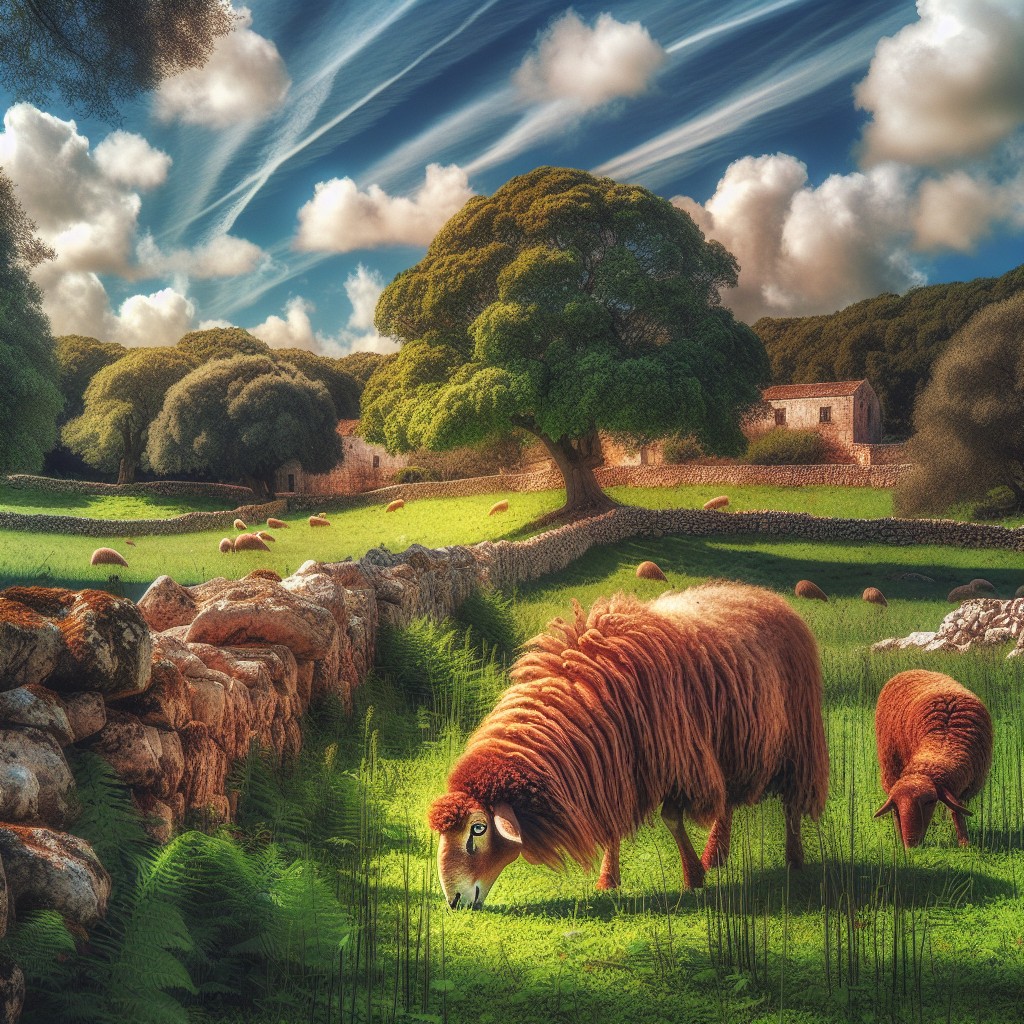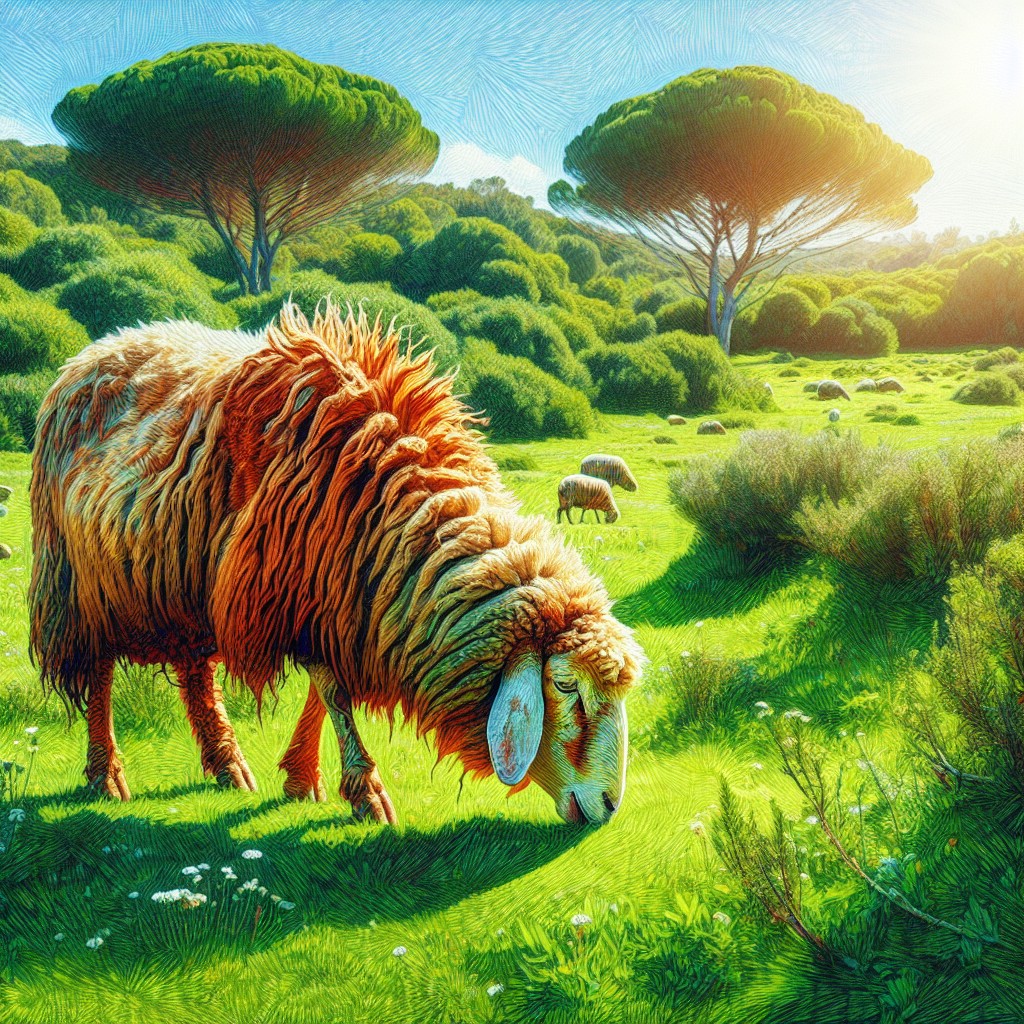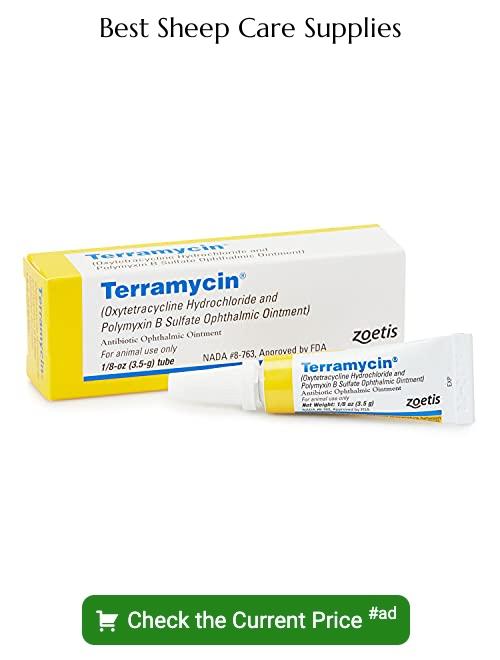Explore the diverse qualities and history of the Tunis Sheep breed because their unique wool lends an unmatched texture and warmth to yarn crafts.
Key takeaways:
- Tunis sheep trace back to ancient Tunisia, brought to the US by George Washington.
- Tunis wool is soft, durable, and versatile for a range of projects.
- Tunis sheep have a distinct red face, legs, and medium-size build.
- Tunis sheep offer multiple revenue streams, including meat and wool production.
- Tunis sheep are hardy, adaptable, and make great heritage farm animals.
Origin and History

Tunis sheep trace their lineage back over a millennium to ancient Tunisia in North Africa. They arrived in the United States during the late 18th century as a gift to George Washington from the ruler of Tunisia.
The breed’s adaptability enabled it to thrive in the diverse climates of the New World, from the pastures of the East Coast to the heartland of the Midwest.
Known for their hardy nature and gentle disposition, Tunis sheep played a significant role in the development of American agriculture throughout the 19th and early 20th centuries, although their numbers dwindled during the World Wars.
Recent conservation efforts have sparked a resurgence in the breed’s popularity among small-scale farmers and heritage livestock enthusiasts.
Fleece Quality

The wool of the Tunis sheep is renowned for its unique qualities that make it a favorite among hand spinners and knitters. Its fleece features a creamy, light red or tan color which is quite distinctive. The fiber is known for its long staple length, typically ranging from 4 to 6 inches, which contributes to ease of spinning.
A key characteristic of Tunis wool is its blend of softness and durability. This combination is highly sought after for garments that require both comfort against the skin and the ability to withstand regular use. The crimp of the wool—waves or bends in the fiber—provides natural elasticity, lending itself well to knitting projects that benefit from memory and form retention.
The Tunis’s fiber diameter ranges from 25 to 30 microns, placing it in the medium-soft category of wools. This micron range means it’s versatile enough for a broad spectrum of projects, from cozy sweaters to durable outerwear.
Moreover, Tunis fleece has a high-yield of clean wool after washing, with low amounts of lanolin compared to some other breeds. Thus, crafters can expect less shrinkage and waste during the cleaning process. This characteristic maximizes the usability of each shearing, making Tunis wool an efficient and rewarding choice for yarn enthusiasts.
Physical Description

Characterized by a distinct red face and legs, Tunis sheep often capture attention with their unique appearance. This red hue can range from a light cinnamon to a dark rust color. Their heads and legs are free from wool, which aids in showcasing their striking color contrast against the white fleece.
Mature ewes and rams exhibit a medium-size build, with ewes typically weighing between 120 and 150 pounds, and rams between 160 and 220 pounds. Rams also feature spiraling horns, while ewes generally have no horns. The breed’s body is covered in a creamy white fleece, known for its crimp and loft, contributing to the breed’s reputation for producing high-quality wool.
Additionally, the sheep’s gentle demeanor and alert expression are observable traits that highlight their adaptability to a variety of environments.
Economic Utility

Tunis sheep offer multiple revenue streams for farmers, making them a financially sound livestock choice. Their meat is known for its mild flavor and tenderness, appealing to a niche market that prefers gourmet meats. The breed’s early maturity translates to quicker turnaround times from birth to market, optimizing profit potentials.
In addition to meat production, the sheep’s fleece is a prized asset in the textile industry. The wool is medium-grade with a micron count suitable for a variety of yarn-based crafts, including knitting and crocheting. The unique creamy color of Tunis wool eliminates the need for bleaching, thereby fetching higher prices and appealing to crafters who value natural fibers.
Furthermore, Tunis ewes are prolific breeders, often producing twins or triplets, which enhances flock expansion and genetic diversity. This breeding efficiency ensures a steady increase in livestock numbers, thereby boosting the economic viability of the breed for farmers focused on long-term growth.
Lastly, due to their docile nature, Tunis sheep require less intensive management, reducing labor costs and making them a more economical choice for small-scale and hobbyist farmers. Their adaptability to various climates also minimizes the need for costly infrastructure, such as specialized housing.
Tunis Sheep in the United States
The introduction of Tunis Sheep to America traces back to the late 18th century, with historical accounts crediting George Washington and Thomas Jefferson with an early interest in the breed. This patronage by Founding Fathers was motivated by the sheep’s adaptability to the American climate, their hardiness, and their superior meat quality.
Following a near extinction in the 1930s due to the rise of more industrialized breeds, Tunis Sheep experienced a resurgence thanks to small-scale farmers and heritage breed conservators recognizing their unique qualities. Presently, Tunis Sheep are distributed throughout the country and are especially prevalent in the eastern United States.
Today, they are celebrated both for their contribution to genetic diversity within American sheep populations and their fit within sustainable agriculture practices. They thrive on pasture-based systems which capitalize on their ability to convert forage into lean meat, making them a favored choice among artisanal meat producers and within the slow food movement. Fiber enthusiasts also seek out their wool for its distinctive creamy color and hand-spinning properties.
Consequently, Tunis Sheep have garnered a dedicated following and have significantly contributed to America’s agricultural heritage and the livelihood of small farms, emphasizing the important intersection of conservation, history, and practical farming.
Raising Tunis Sheep
Tunis sheep have a reputation for being hardy and adaptable, making them suitable for a variety of climates. They exhibit exceptional mothering abilities, often having multiple births without the need for intense human intervention.
To ensure optimal health and productivity, provide them with quality pasture for grazing and supplement their diet with hay and grain as necessary, especially during the colder months.
Shelter is important to protect these animals from extreme weather, though they are known for their tolerance to heat and cold. Provide ample clean water daily, as sheep rely on hydration for maintaining their health and aiding in digestion.
Routine veterinary care is crucial; this includes vaccinations and regular deworming to prevent parasites, which can be detrimental to the flock’s health. Hoof trimming should be conducted periodically to prevent foot rot and other hoof-related issues.
For breeders, Tunis sheep’s calm temperament makes them an ideal choice for beginning shepherds and those interested in engaging with heritage breeds. To maintain a healthy genetic pool, keep accurate breeding records and consider the genetic diversity of your flock when selecting breeding pairs.
Tunis Sheep At Heritage Farms
Heritage farms play a crucial role in preserving the genetic diversity of livestock, including Tunis sheep. These farms prioritize sustainable farming practices and often involve the community through educational programs.
Tunis sheep serve as a cornerstone species at many of these operations due to their adaptability and gentle disposition, making them excellent candidates for farm tours and educational opportunities.
1. Conservation Efforts: Heritage farms contribute to the conservation of Tunis sheep by maintaining purebred flocks and participating in breed registries.
2. Education and Outreach: Visitors to heritage farms have the opportunity to learn about the history of Tunis sheep, witness their unique characteristics firsthand, and understand the importance of maintaining genetic diversity.
3. Wool Production: The farms often sell Tunis wool, which is known for its fine, medium-grade texture and red-tinted color, providing a source of income while promoting this unique product.
4. Sustainable Practices: Heritage farms often graze Tunis sheep on pasture, which can contribute to land management strategies that promote soil health and biodiversity.
5. Community Involvement: Through volunteering, workshops, and sheep-to-shawl programs, the local community can become directly involved in the care and appreciation of Tunis sheep, fostering connections between people and the agricultural heritage of the region.
FAQ
Do Tunis sheep have to be sheared?
Yes, Tunis sheep do need to be sheared once a year to harvest their high-quality fleeces.
Can Tunis sheep be milked?
Yes, Tunis sheep can be milked and they produce a significant amount of milk despite being technically a meat breed.
Are Tunis sheep parasite resistant?
Yes, Tunis sheep are known to have parasite resistance.
Are Tunis sheep prolific?
Yes, Tunis sheep are fairly prolific, known for being good mothers and milkers.
What is the average lifespan of Tunis sheep?
The average lifespan of Tunis sheep is between 12 to 16 years.
What are the primary uses of Tunis sheep wool?
Tunis sheep wool is primarily used in making warm, durable textiles such as sweaters, scarves, and hats, as well as felting projects due to its characteristic spongy and elastic properties.
Can Tunis sheep adapt to varying climates?
Yes, Tunis sheep are known for their adaptability to various climates, from hot summers to cold winters.





